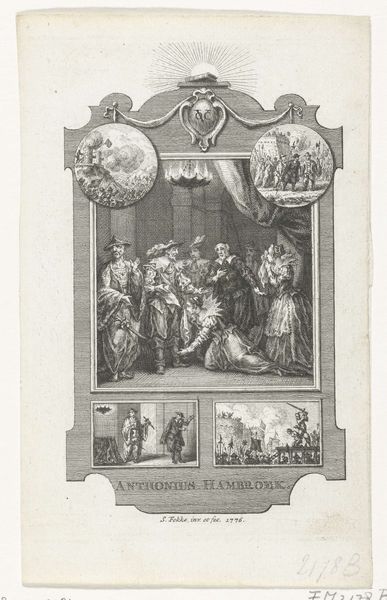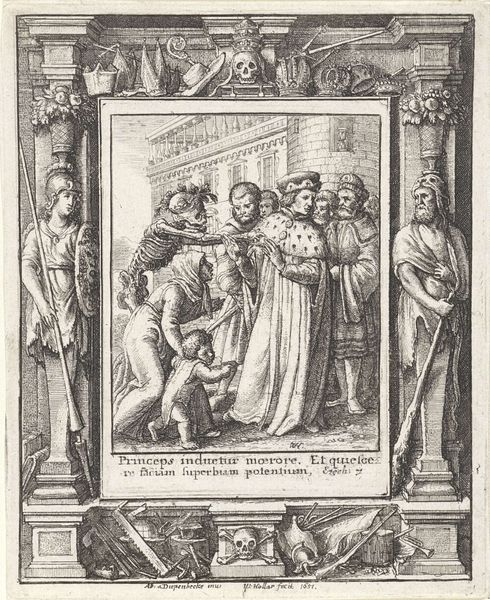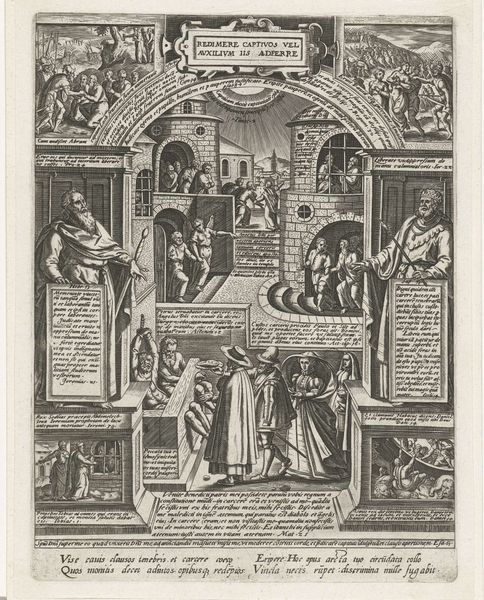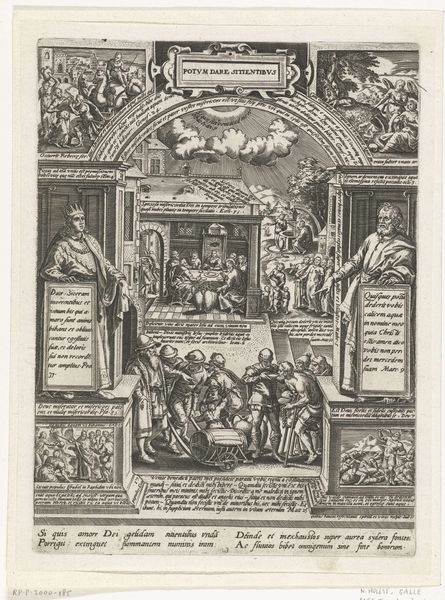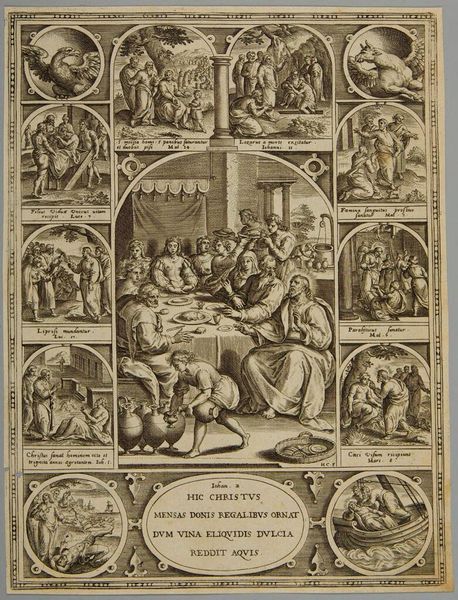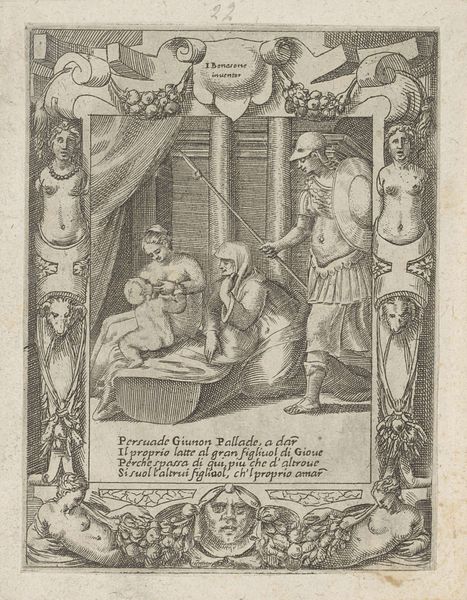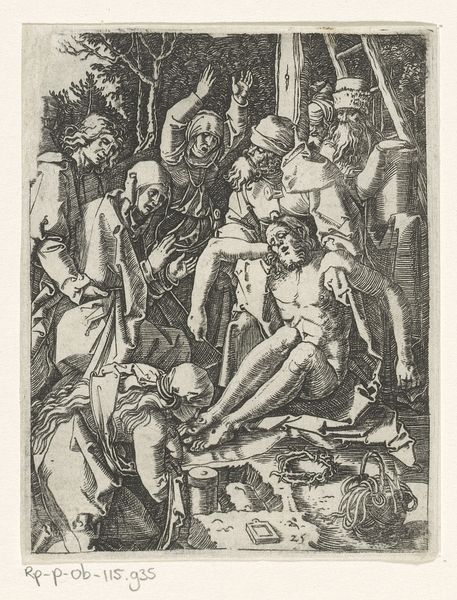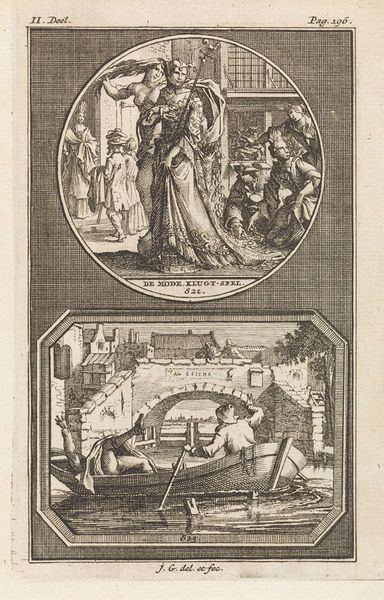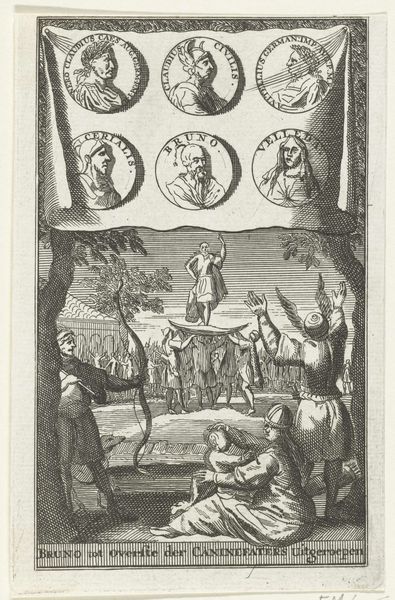
Twee voorstellingen op penningdoos: schenking van het nieuwe wapen van Amsterdam, 1342; toevoeging van de keizerskroon, 1489 1723 - 1738
0:00
0:00
jangoeree
Rijksmuseum
drawing, print, etching, ink, engraving
#
drawing
#
baroque
# print
#
etching
#
ink
#
history-painting
#
engraving
Dimensions: height 137 mm, width 80 mm
Copyright: Rijks Museum: Open Domain
Curator: This etching and engraving, crafted by Jan Goeree between 1723 and 1738, presents "Twee voorstellingen op penningdoos: schenking van het nieuwe wapen van Amsterdam, 1342; toevoeging van de keizerskroon, 1489"—two depictions on a medal box, chronicling significant moments in Amsterdam’s heraldic history. It's quite small in scale. Editor: Yes, it gives off the air of historical drama in miniature, the crisp lines lend it a certain stoic mood. It reminds me of currency; a dense composition, isn't it? Curator: It is. Note the formal symmetry employed across both scenes: each depicts a civic transaction. Above, we see Willem IV bestowing Amsterdam's new coat-of-arms, and below, Maximilian I grants the imperial crown. Consider Goeree’s deliberate use of light and shadow—chiaroscuro—to emphasize the key figures and heraldic devices. Editor: True. My eye immediately goes to those crests and their representation within social circles. I'm wondering about the printing process. The way Goeree balances fine, etched lines with the broader, engraved areas really highlights the contrast. Think of the engraver’s tools against the copper plate. Each line, each cut, deliberately reinforcing hierarchies, a way to disseminate civic identity through material means. Curator: Exactly. And what about the very purpose of these prints? Presumably part of a larger series, acting as almost pedagogical illustrations meant to disseminate a certain narrative of Amsterdam’s ascendance, its relationship to power and empire. The inscriptions in Latin and placement reinforce the sense of gravity. Editor: Of course, it's important to understand how access was governed. We might ask, who had these prints? Were they broadly disseminated, reaching merchants, craftsmen? The image and text contribute to constructing the story of Amsterdam, but what labour, materials, and markets allowed that story to reach certain hands and not others? Curator: An essential point to consider! This piece offers a powerful lesson on art as more than just a symbolic representation, but as a deliberate production shaping narratives around labor and capital. Editor: A small object with big implications! Jan Goeree’s artwork demonstrates how meaning is built from image to dissemination through varied consumption.
Comments
No comments
Be the first to comment and join the conversation on the ultimate creative platform.


